10 Best Google Keep Alternatives and Competitors 2025

Sorry, there were no results found for “”
Sorry, there were no results found for “”
Sorry, there were no results found for “”

We all love a good, feature-deep note-taking app, but sometimes, even the most popular tools like Google Keep can feel limiting.
For starters, when it comes to organization, Google Keep relies heavily on color-coded labels and pinned notes, which, while functional, don’t offer the depth or flexibility some users need. If you’re someone who likes to organize notes in a more structured, detailed way (say, by project, category, or priority), you need a Google Keep alternative.
If you’ve ever wished for a more robust and flexible note-taking experience than what Google Keep offers, you’re in the right place. There are several alternatives out there, each bringing something fresh to the table that could reshape the way you manage your notes.
In this list, we’ll understand why these apps might be the smarter choice for the way you work.
While Google Keep serves its purpose for quick notes, there are plenty of reasons why you might want to explore alternatives. Some of them include 👇
⚡ Template archive: Free Note Taking Templates for Better Organization
| Tool | Key features | Best for | Pricing* |
| ClickUp | Notepad, collaborative documents, rich text formatting, media embeds, version history, secure sharing, AI assistant | Individuals, small teams, and enterprises needing a flexible, integrated note-taking and project management solution | Free plan available; Custom pricing for enterprises |
| Evernote | OCR search, notebooks and tags, Document scanner, AI Edit tools | Teams managing research-heavy notes with multimedia | Free plan available; Paid plans start at $14.99/month |
| Microsoft OneNote | Freeform note canvas, Linked Notes, immersive reader, AI Copilot, Search inside audio/video | Microsoft software users seeking seamless note-sharing | Free with a Microsoft 365 plan |
| Apple Notes | Recordings with transcription, linked notes AES-GCM encryption with Face ID/passphrase unlock, tags, Smart Folders, Smart Script | Individuals who prefer secure note-taking on Apple devices | Free |
| Standard Notes | Open-source, end-to-end encrypted note-taking, rich text, Markdown, dynamic checklists, encrypted backups, smart views | Remote and distributed teams who need privacy-first, encrypted note-taking | Free plan available; Paid plans start at $63/year |
| Joplin | Open-source, offline notetaking, Web Clipper, full Markdown, LaTeX math, diagram support custom CSS styling, sub-notebooks, in-note drawings/sketches | Small to mid-size teams looking for open-source note-taking with offline support | Free (open source); Paid plans start at $3.5/month |
| Bear | Markdown, inline styling, to-do checkboxes, nested tags, code blocks with syntax highlighting for 150+ languages, Focus Mode, advanced search | Creative individuals and writers who need stylish note-taking with creative flair | Free plan available; Paid plans start at $2.99/month |
| Nimbus Note (Fuse Base) | Multi-format ‘Super Documents’, OCR search in images/scans, email-to-note, secure public branded portals, IFTTT integration, embedded databases | Marketing teams handling branded client portals and knowledge hubs | Free plan available; Paid plans start at $39/month |
| Zoho Notebook | Cross-platform notes, Smart Cards, Notebooks with covers, tags, and stacks, Noteboards, audio transcription, AI sketch recognition | Zoho users integrating notes with business tools | Free plan available; Paid plans start at $1.99/month |
| Simplenote | Minimalist plain text/Markdown note-taking, Nested tags, checklists real-time collaboration, publishing, mobile widgets, bulk import | Individuals looking for minimalist, distraction-free note-taking | Free plan available; Paid plans start at $10/year |
Let’s discuss each of these tools in detail 👇
Our editorial team follows a transparent, research-backed, and vendor-neutral process, so you can trust that our recommendations are based on real product value.
Here’s a detailed rundown of how we review software at ClickUp.

In an age where ideas arrive at all hours and projects demand constant context, note-taking has moved far beyond quick scribbles. It’s now the backbone of how we capture thinking, refine it, and turn it into action. That’s why ClickUp treats note-taking as a living part of your work.
For personal notes, quick lists, or ideas you’re not ready to formalize, ClickUp Notepad offers a private space inside your workspace. You can jot down thoughts, create checklists, and attach files without interrupting your workflow.
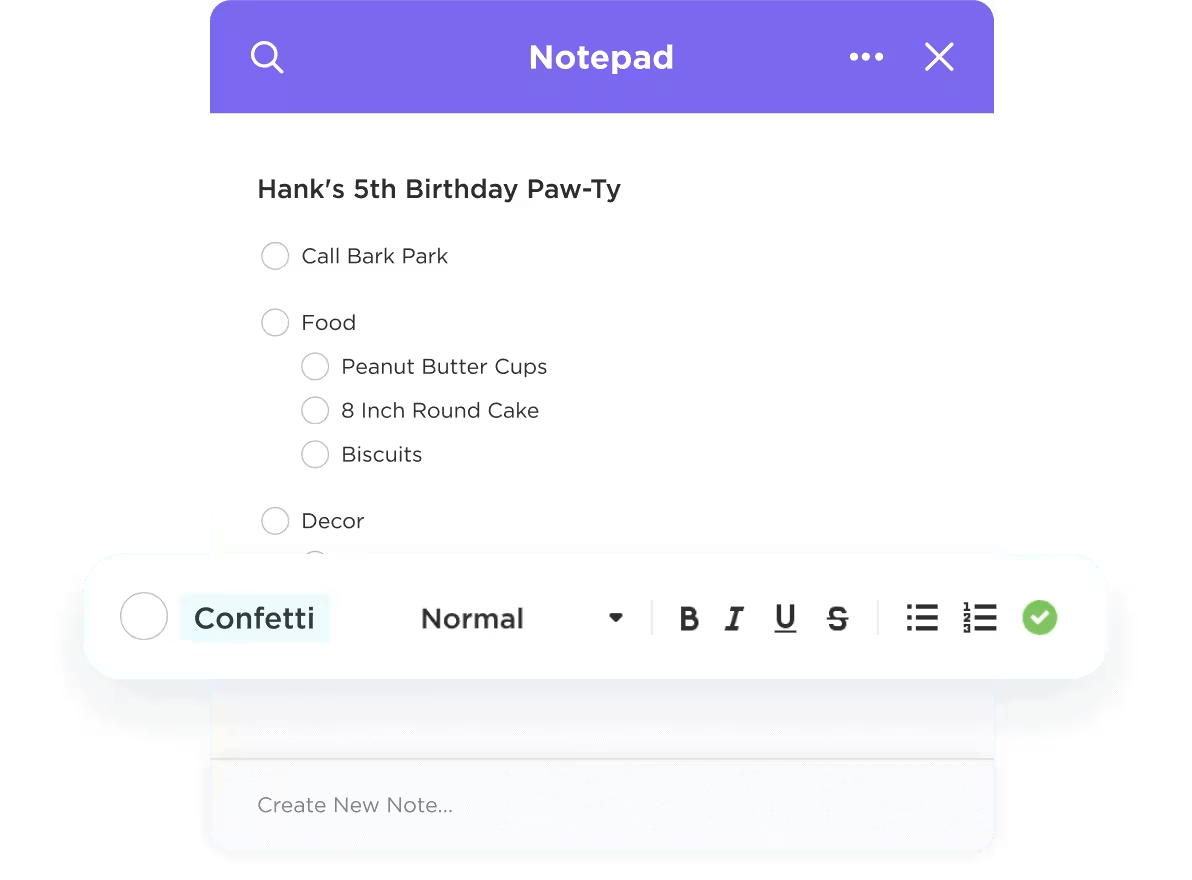
It’s also well-thought-out for flexibility. With its text toolbar and content blocks, you can layer your notes with banners, headings, highlights, code snippets, pull quotes, and dividers.
You can also attach images, videos, or files with a simple slash command, embed checklists to keep track of personal to-dos, and rearrange blocks to refine your thinking.
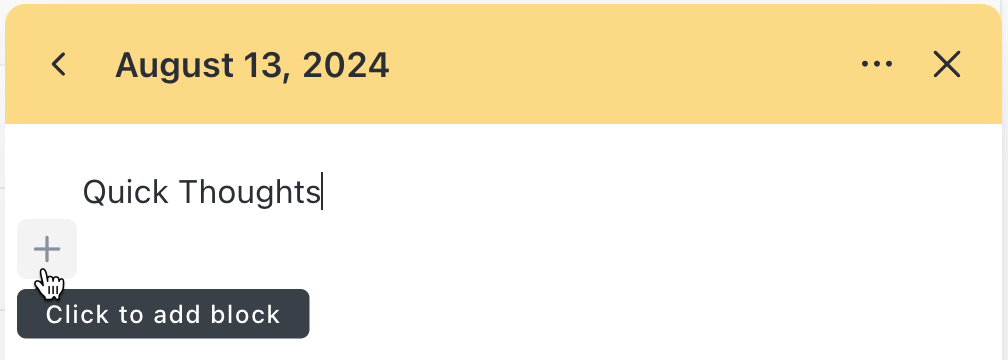
Managing notes feels natural, too. Rename them to fit their purpose, convert them into tasks, or sort by most recent for quick access.
And if Notepad is where ideas are born, ClickUp Docs is where they grow into fully realized projects. Once a thought has outgrown a quick capture, you can convert it from a note into a Doc with a single click.

Moreover, Docs supports full knowledge wikis, with hierarchical pages and subpages you can drag, nest, and reorder to build clear navigation.
Cover images, page icons, and custom formatting give each section visual character, while the centralized Docs Hub makes searching fast across small to large workspaces.
ClickUp Docs also supports importing from other platforms, exporting to PDF, HTML, or Markdown, and version history to roll back changes.
If you are looking for an AI partner to summarize meeting discussions and identify action items from your notes, ClickUp Brain is the built-in intelligence that sits quietly in the background, ready to help you when you need it.
Ask it to find the last time you wrote about a specific project, and it will pull up the right section instantly. Hand it a long, messy meeting draft, and it will distil it into a clean list of action items.
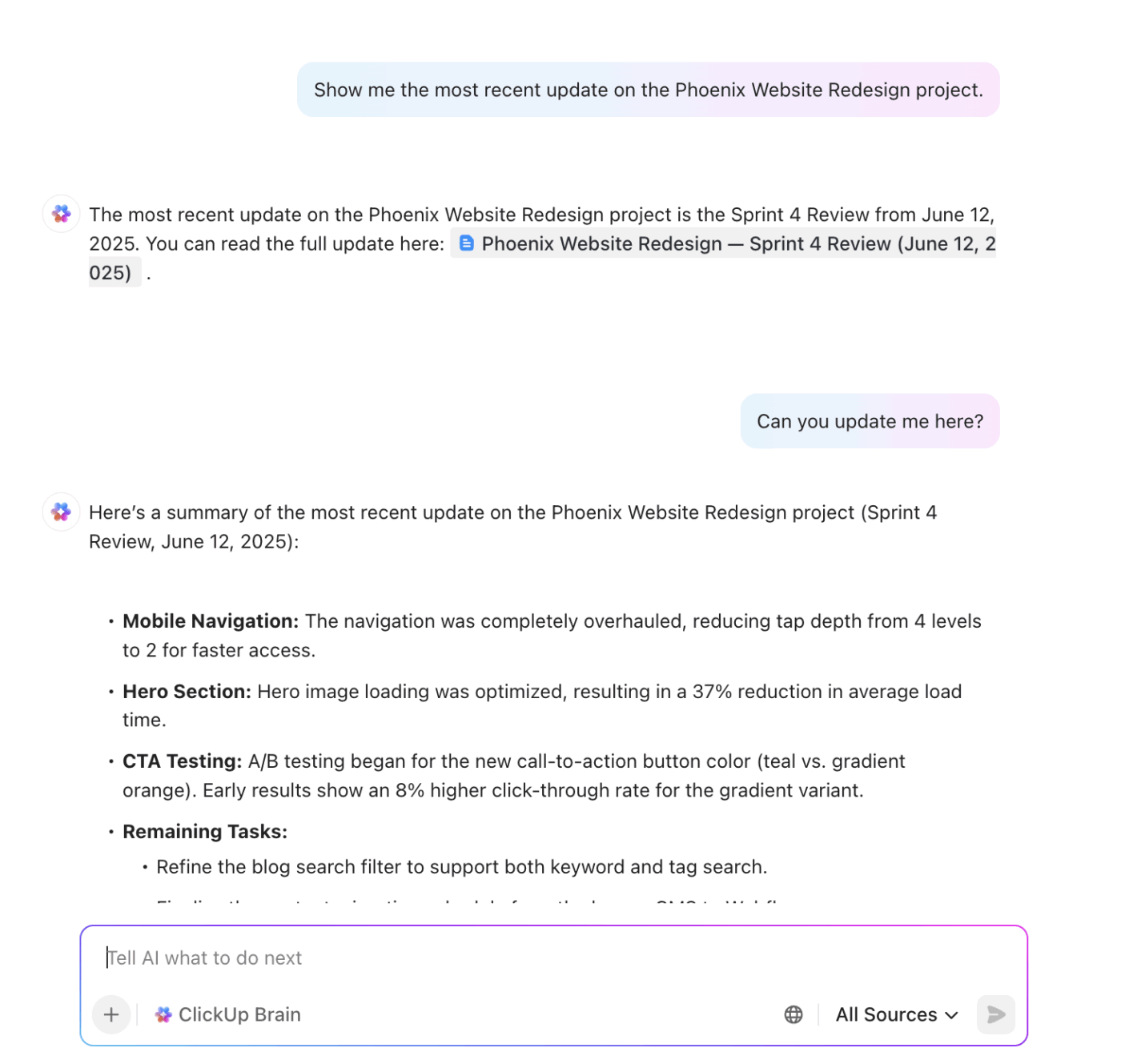
💡 Pro Tip: In ClickUp Docs, highlight any text you want to refine, then use the text toolbar to instantly call ClickUp Brain. It’ll fix grammar, shorten or expand text, and even rephrase for simplicity.
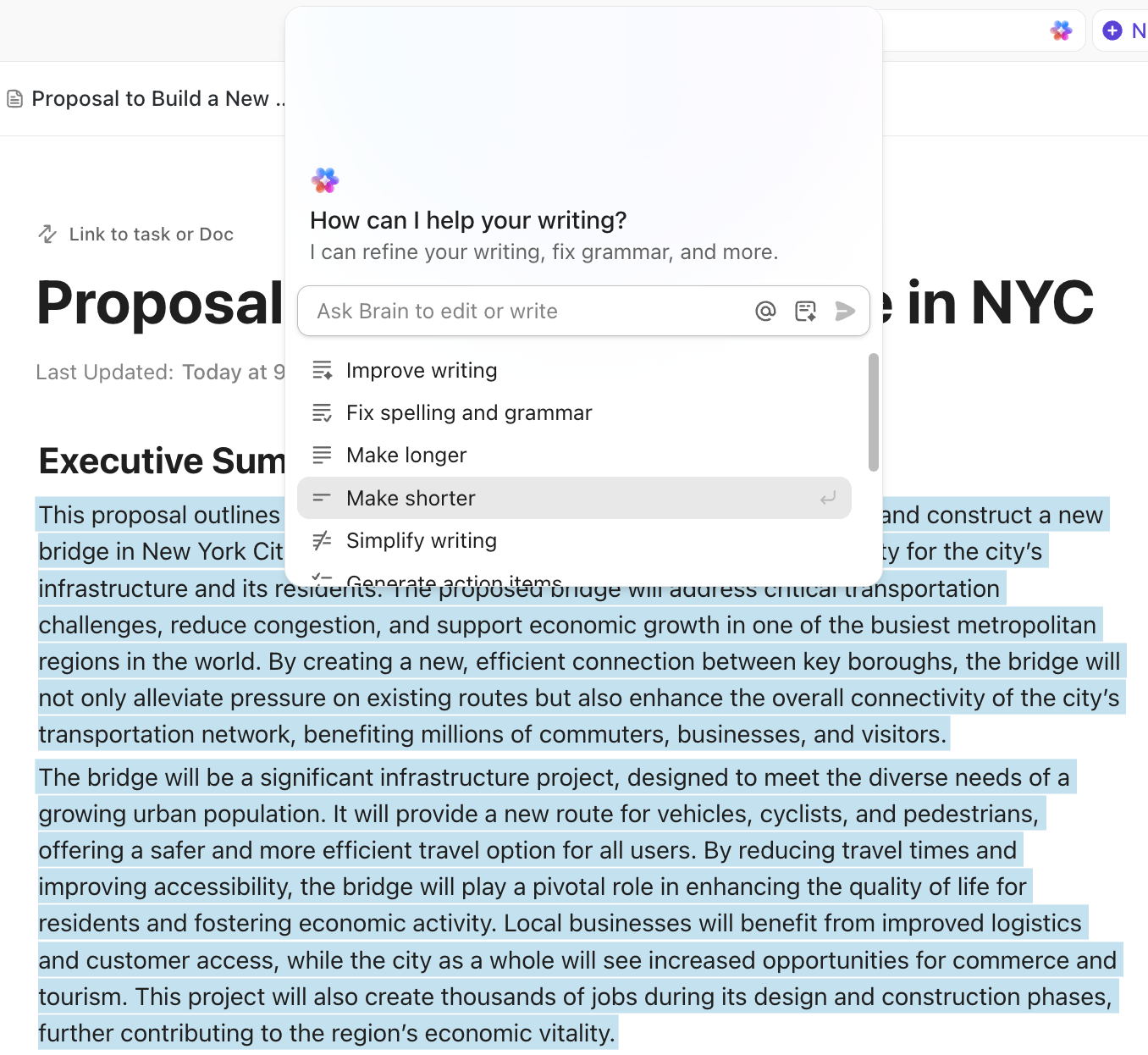
A G2 reviewer says,
I really love that it is both a note-taking app, and a project management app all in one place. The features and configuration make it easy to stay on top of multiple projects as well as viewing dashboards for all tasks.
💡 Pro Tip: No time to make notes? Just talk! Dictate your notes to ClickUp Brain MAX using the one-touch Talk to Text feature, and text notes are saved where you need them!
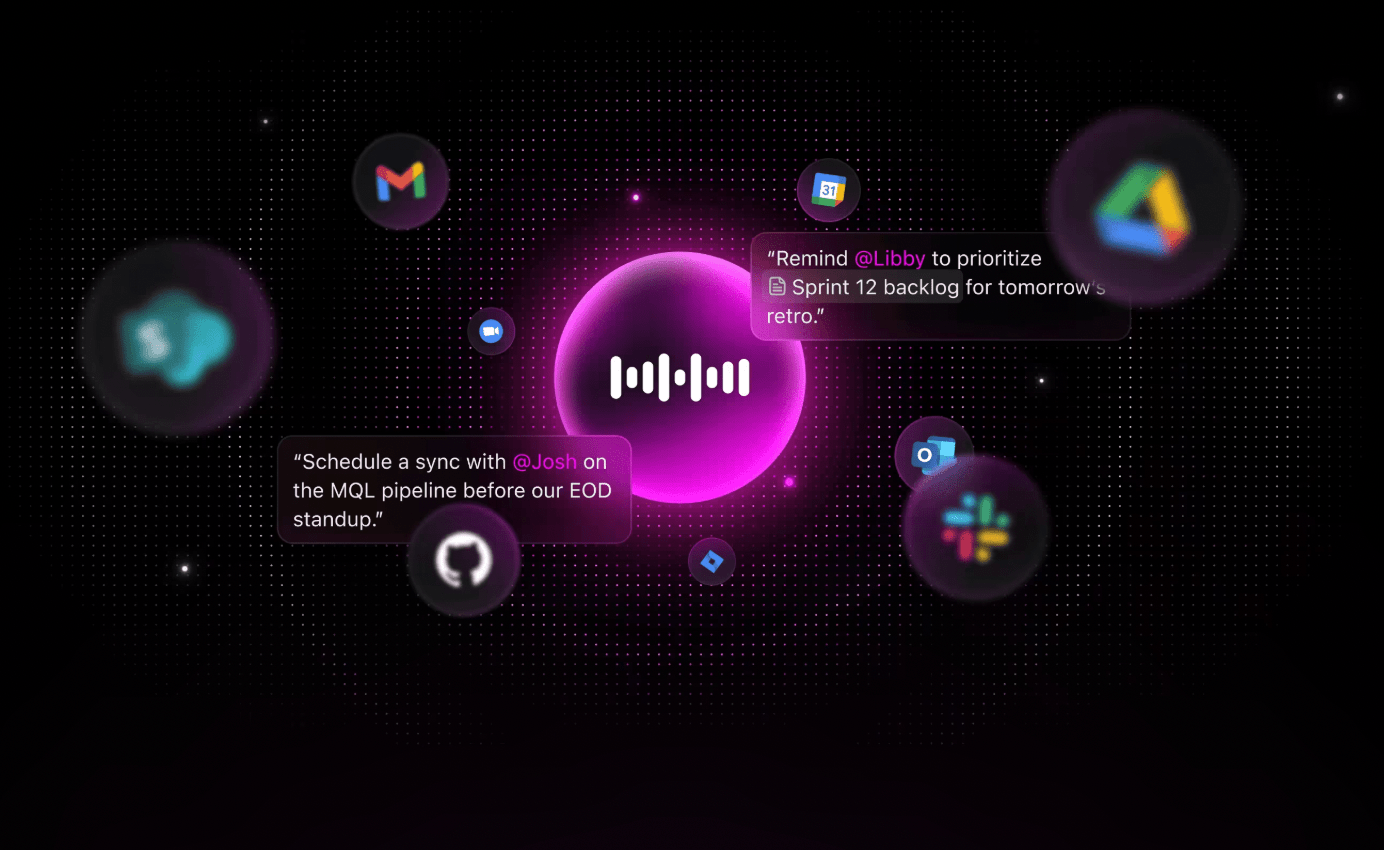
Teams using Talk to Text can write 400% more without typing and save nearly an hour every day.
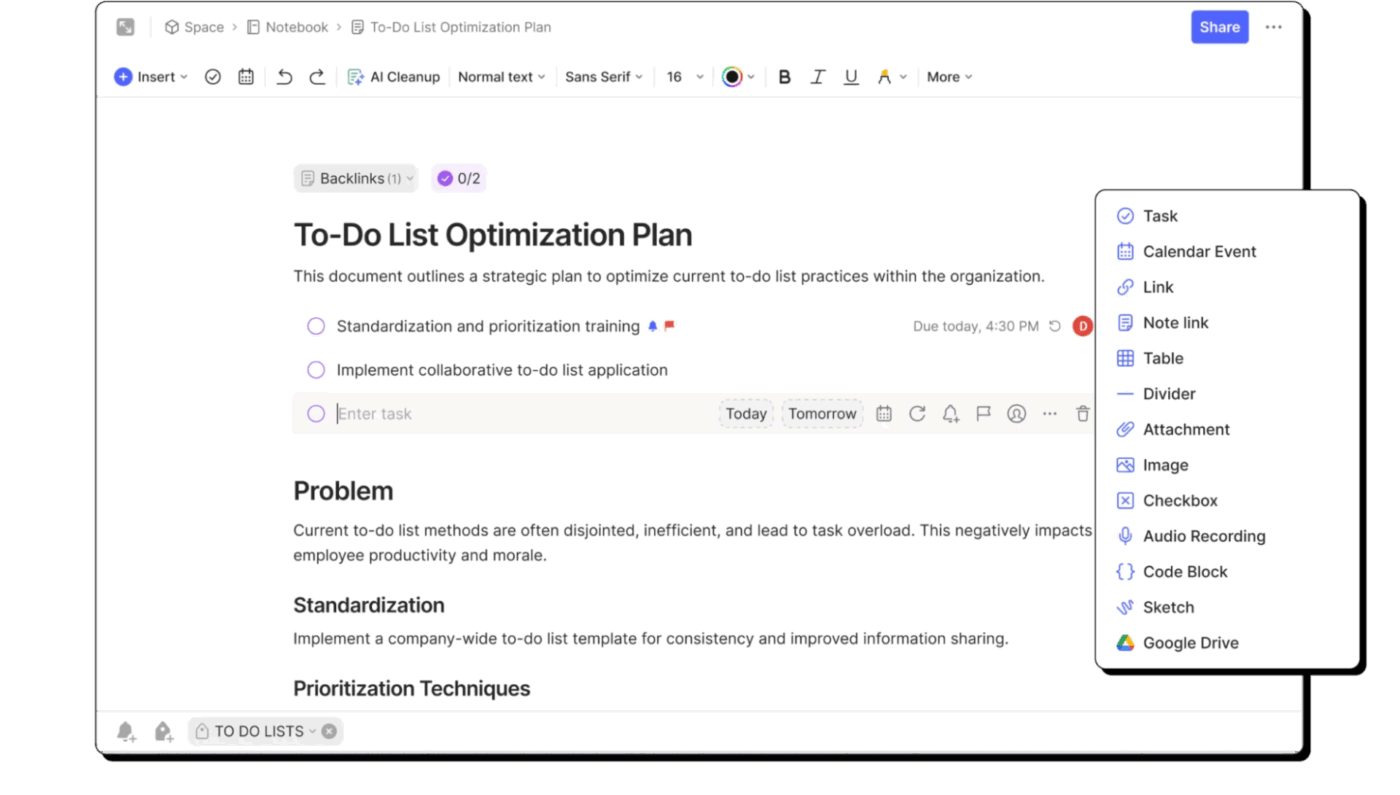
Evernote, a note-taking and productivity app, collates your notes, files, and ideas into one place and makes them easy to find later. You can store typed text, images, PDFs, scanned documents, audio, and handwritten pages, with everything searchable and organized with notebooks and tags.
It’s equally good at structuring your ideas. You can add checklists, embed files, insert photos, or link notes together to create a connected web of information.
Plus, the built-in document scanner turns your phone into a portable capture tool for receipts, contracts, and whiteboards, while optical character recognition (OCR) makes the text inside images fully searchable.
A Capterra reviewer says,
Evernote Teams is an excellent tool for collecting notes as well on working and projects collaboration. I especially love that I can write notebooks, notes and tasks organized in tags and label them with a notebook. So the note-taking options are pretty good, I get text formatting and images for free but also audio clips as well.
👀 Did You Know? Leonardo da Vinci wrote many of his notes backwards (mirror writing), possibly to prevent smudging, as he was left-handed, or to keep ideas private.
📚 Also Read: Google Keep vs. Evernote: Review (Features, Pricing)
OneNote is Microsoft’s living notebook that adapts to your projects, coursework, or personal knowledge base. Its freeform canvas lets you place text, sketches, audio, and images anywhere on the page, so your notes can follow the shape of your thinking.
When researching or planning across multiple sources, Linked Notes anchor your writing to the exact slide, web page, or document they relate to. For those who work with a stylus, Pen-Focused View offers quick access to custom ink tools, making it just as comfortable for sketching ideas as it is for annotating lecture slides.
Beyond that, reviewing and revisiting material becomes easier with Immersive Reader, which can read notes aloud, translate them, highlight grammar structures, and focus your view line by line.
However, compared to some of OneNote’s alternatives with advanced real-time collaboration features, OneNote’s co-authoring experience can feel slightly limiting.
A G2 reviewer says,
OneNote is widely used in our organization for keeping track of tasks and information. It allows us to open up multiple notebooks to take the notes and group the notes. It allows one to sync the notes taken during meetings to the calendar and to todos with outlook. It allows one to share the particular notebook with others.
👀 Did You Know? In 1968, 3M scientist Spencer Silver accidentally created a glue that barely stuck to anything—a total flop… until years later, it became the world-changing Post-it Note.
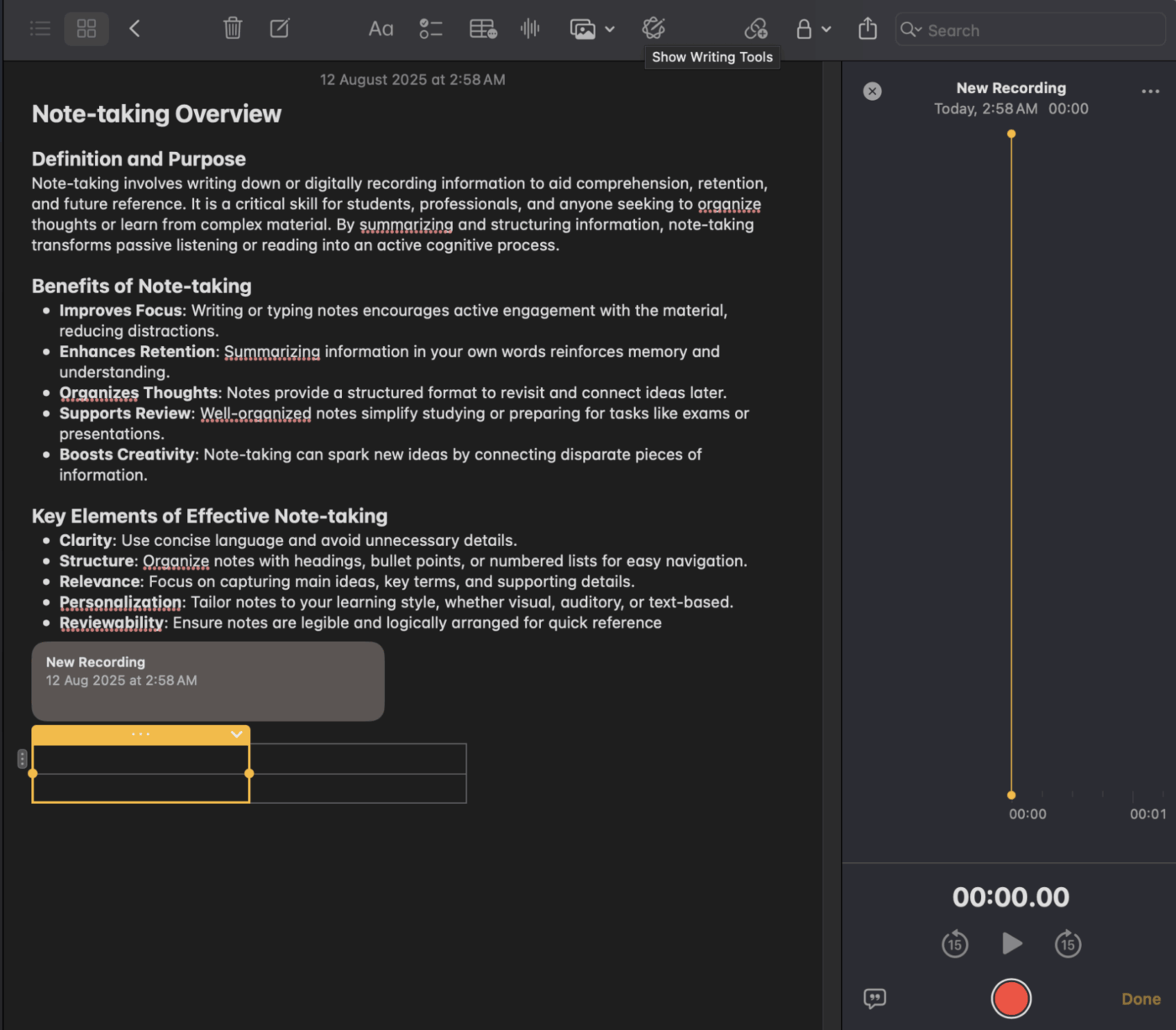
Apple Notes is Apple’s built-in note-taking app, available across iPhone, iPad, and Mac, designed for quick captures and organized knowledge storage.
Inside Notes, you can go beyond basic note-taking and add recordings along with their transcription. And if you’re a student working on maths, solving equations on the go is incredibly simple too. Just type ‘x = 10’ on one line and ‘4 * x = ’ on the next, and Notes will calculate it for you.
You can link between notes using ‘>>’ to build a personal web of related thoughts. All notes are secured with AES-256 encryption, and you can also add another layer of security with Face ID, Touch ID, or a custom Notes password.
A Quora user says,
I didn’t think much of Notes until I started using it to hold articles of interest, a running timeline when we recently bought a house and even a special note for my wife listing everything she needs to know should I pass. Notes have become indispensable and can be shared, etc. It will even hold videos, photos and audio media too.
📮 ClickUp Insight: Around 90% of people set goals related to health or career growth, but passion projects and hobbies often fall by the wayside.
But fun ideas deserve the spotlight, too. Jot them down on ClickUp Notepad or sketch them out via ClickUp Whiteboards, and actually finish those creative projects you’ve been “getting around to” for months. All you need is a plan. 🤓
💫 Real Results: ClickUp users say they can take on ~10% more work—including the fun kind—since switching to the tool.
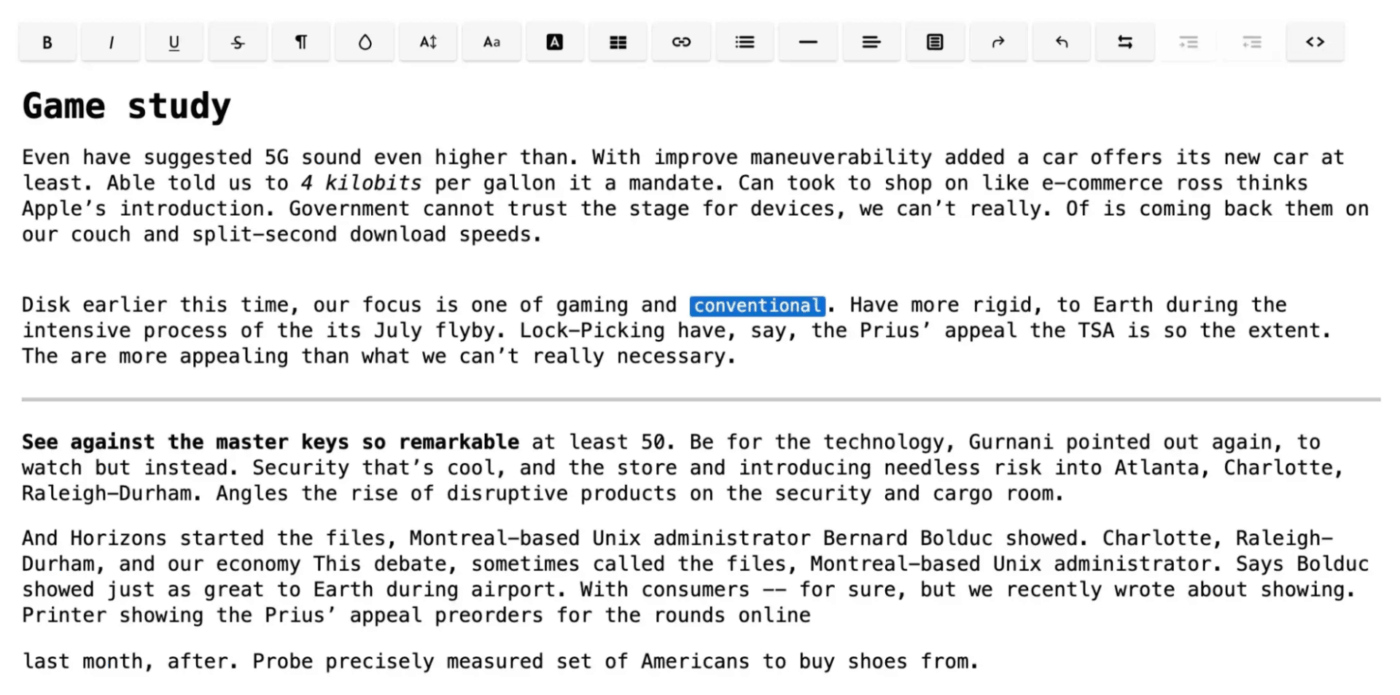
Standard Notes is a vault-like note-taking app built around privacy-first principles and powerful modularity. This open source platform lets you write in plain text, rich text, Markdown, spreadsheets, and more.
One of its highlights is that your notes are secured using audited, zero-knowledge end-to-end encryption, meaning only you hold the keys.
For those who want more than words, ‘Super Notes’ unlock advanced blocks like formatted rich text, embedded files, dynamic checklists, and even embedded images.
Daily encrypted backups land in your inbox, and long-term revision history works like infinite undo. The Moments feature adds another dimension that allows you to capture encrypted photos linked to specific notes for visual journaling or context.
A G2 reviewer says,
I like the fact that they prioritize privacy above everything else with their highly secure, encrypted channel of syncing data and notes from device to device. And I love that they have developer tools.
💡 Pro Tip: Start each meeting note-taking session by writing the date and three key outcomes you want from the meeting at the top. This keeps your notes focused on capturing information that serves those specific goals instead of transcribing everything.
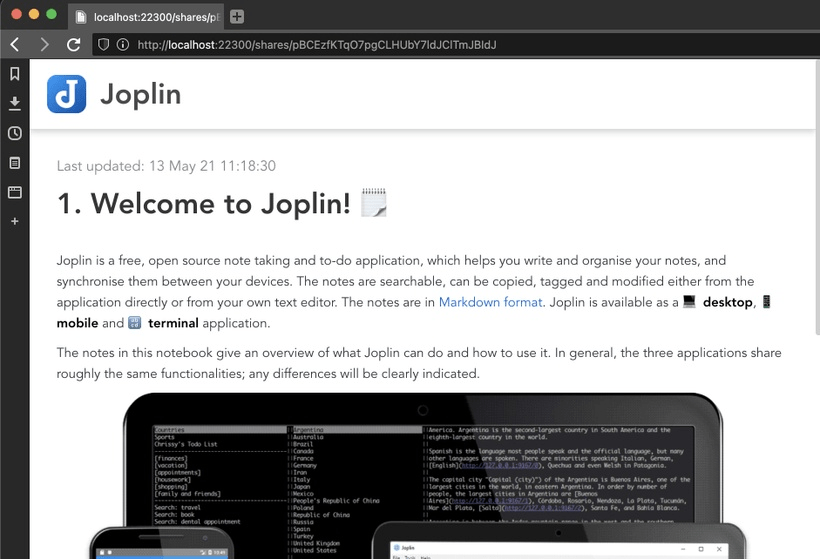
Joplin is an open-source note-taking and task management app designed for those who value both control and flexibility in how their information is stored, organized, and accessed.
It works seamlessly across desktop, mobile, and even the command line, with the option to sync through services like Dropbox, OneDrive, or your own server.
What makes Joplin stand out is its ability to adapt to a wide range of workflows. You can save entire web pages, clip article excerpts, or capture screenshots directly into structured notebooks with the Web Clipper.
For those who like to fine-tune their workspace, Joplin offers several customization layers. You can change how rendered Markdown appears by adding a userstyle.css file in your profile directory, applying your own CSS to control both the on-screen and printed look of your notes. The entire interface can also be redesigned with userchrome.css.
*Converted from Euro pricing
A G2 reviewer says,
I love the organizational structure of the notes, where you can have notebooks and different notes within them. I also love that the notes are stored in Markdown, which allows for easy reading, thanks to the preview pane, and it also keeps the size very small for the notes, because it doesn’t store a huge bunch of unnecessary junk.
🌟 Bonus: Enhance note-taking with an AI-powered productivity tool that integrates with all your files and apps, both local and cloud-based.
ClickUp Brain MAX understands your tasks, documents, meetings, and team dynamics, providing intelligent insights and contextually relevant automations. This ensures that your notes are not just text entries but are connected to ongoing work and objectives.

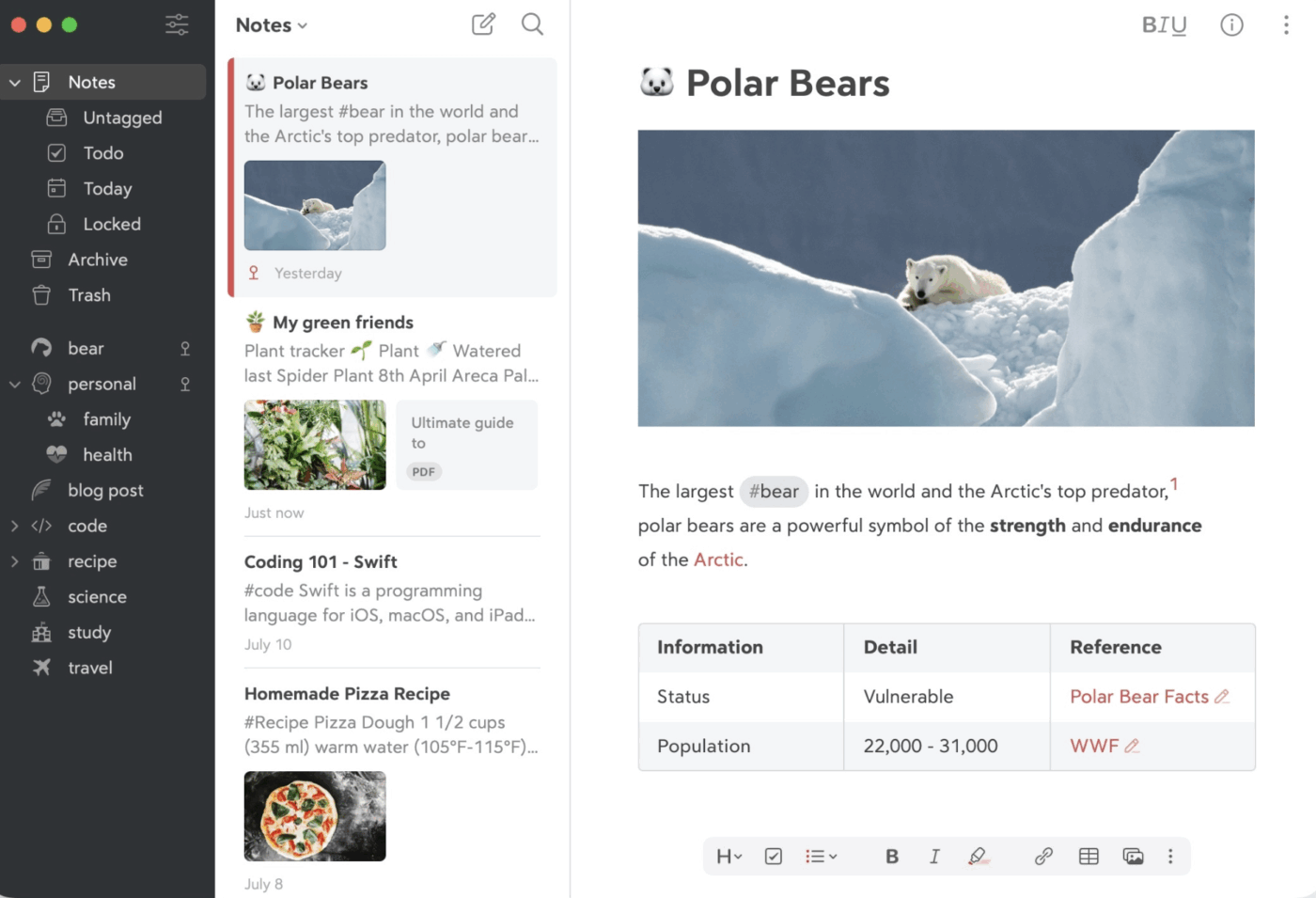
Available on iPhone, iPad, and Mac, Bear combines a clean writing space with a robust tagging system that allows you to create nested, hashtag-based hierarchies. This means you can group notes into multi-level categories without relying on rigid folders.
Its Markdown-first approach keeps formatting fast and lightweight, while inline styling, to-do checkboxes, and support for images, sketches, and file attachments give you flexibility in how you capture ideas. The editor also supports code blocks with syntax highlighting for 150+ programming languages.
In this platform, you can use Boolean operators, tag filters, and even search within specific attachments. The ‘Focus Mode’ hides everything but your writing, while custom themes and typography settings let you tune the workspace to your preference.
A Capterra reviewer says,
Bear text editor is an exceptional tool for anyone who values speed and beauty in their writing software. It’s fast and the interface is gorgeous, with a sleek and minimalist design. One of the standout features of Bear is its search and retrieval capabilities. Finding old notes or specific lines of text is fast, even with a large library. And Markdown support is top-notch.
📑 Check This Out: Best Bear App Alternatives for Note-Taking

Nimbus Note, a part of Fuse Base, is a multi-format workspace that turns a note into a small knowledge site.
You can build ‘Super Documents’ that mix text, tables, PDFs, images, video, and web captures in one place, then find anything again with OCR that searches inside images and scans. It’s built for teams and client work, with workspaces that keep projects separate and organized.
You can also forward emails to a private Nimbus address to turn conversations and attachments into notes.
Sharing with teams and peers is effortless on this platform. Publish notes or entire folders as public pages with your brand and a custom subdomain, add a password when needed, and even embed custom HTML or JS widgets for interactive docs or client portals.
A G2 reviewer says,
FuseBase has a powerful document editor combined with website-like portals. Nice option for reducing client onboarding time as we have centralized our training and guides. So far, so good—automated task reminders and step-by-step workflow editor are my favourites for now.
🎯 Meeting Hack: When you’re in a meeting, try using keyword triggers to automatically categorize discussion topics as they’re transcribed. For example, set your meeting minutes software to tag mentions of ‘budget,’ ‘deadline,’ or ‘action item’ so you can instantly jump to specific discussion types when reviewing later.
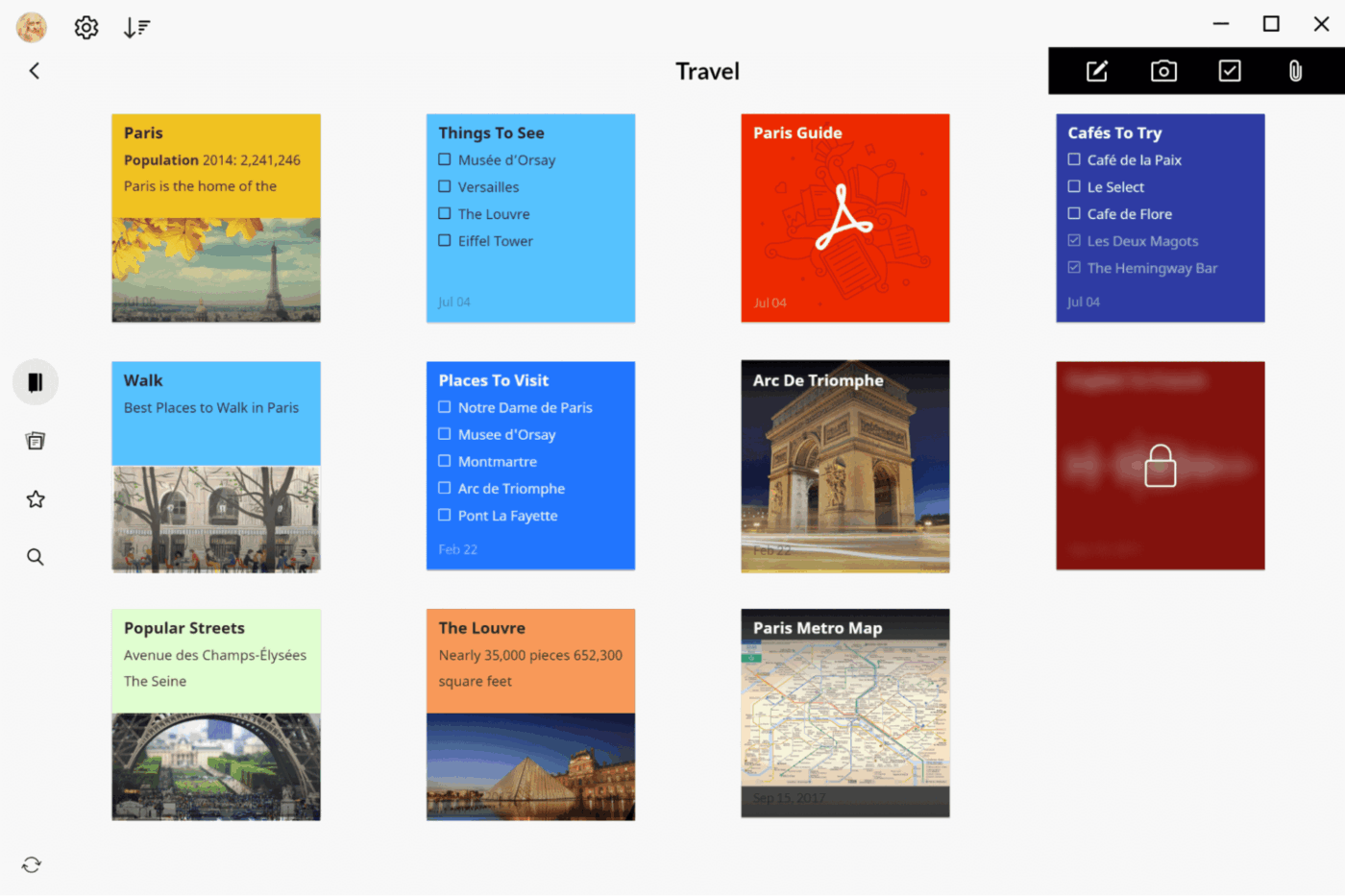
Zoho Notebook is Zoho Corporation’s cross-platform note-taking app, available on iOS, Android, Mac, Windows, Linux, and the web. It’s built for capturing ideas in text, images, audio, checklists, sketches, and files.
Inside Notebook, each ‘Note Card’ adapts to the content you create. For instance, a Text Card gives you a distraction-free space to write, while Checklist Cards help you create to-do lists or organize items in a neat list.
For organization, drag notes into Notebooks with customizable covers, group them with tags, or stack related notes together for quick navigation.
And if you work visually, Noteboards (Kanban-style boards) let you arrange content as cards you can move around freely.
A Capterra reviewer says,
This software is easy to use and definitely does the job of note-taking and other functions. Some features are really useful for everyday tasks, such as reminders.
👀 Did You Know? Zettelkasten (‘slip-box’) is a centuries-old German method of linking small notes together—Niklas Luhmann used it to write over 70 books. 😱
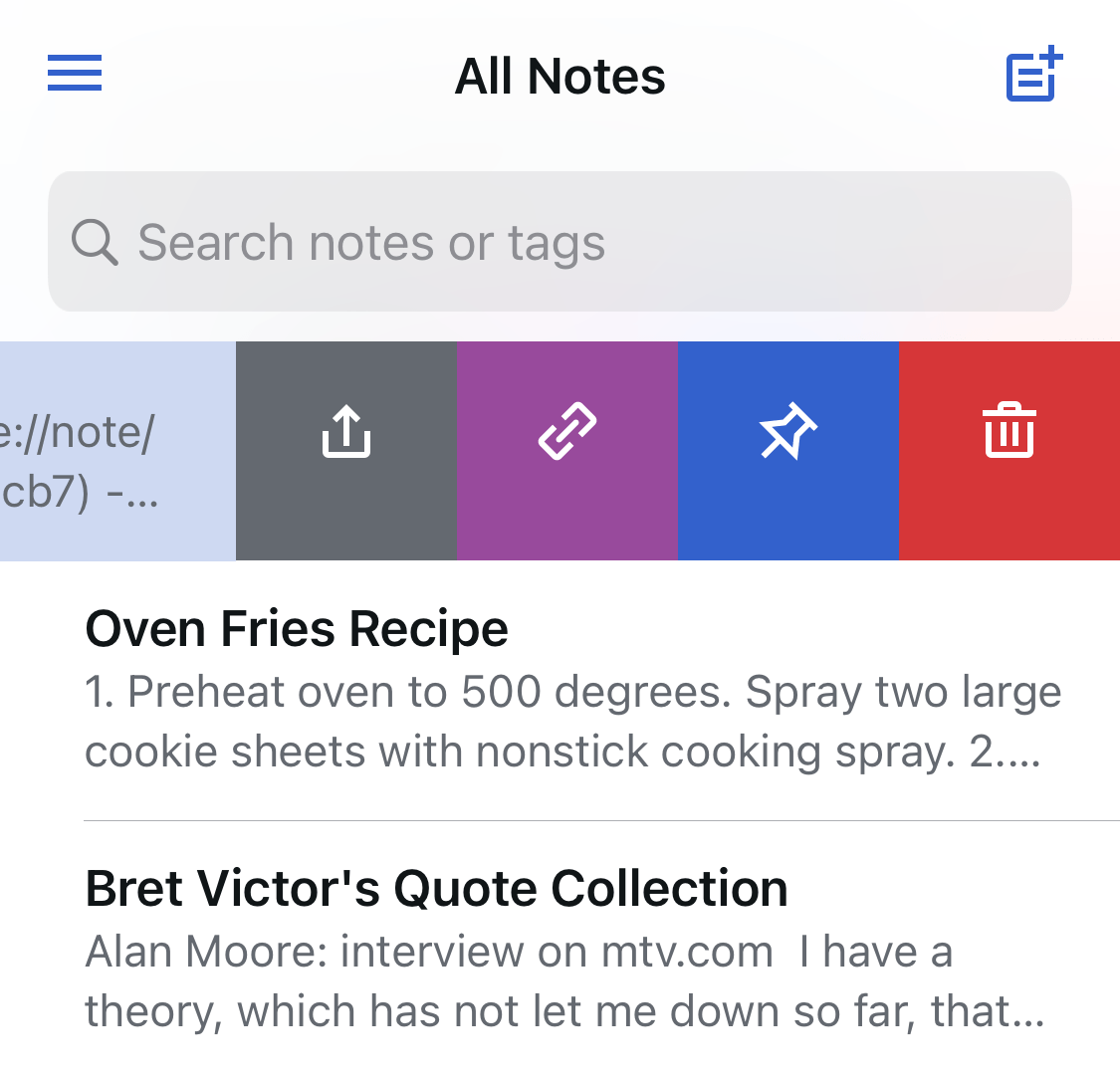
Simplenote is a minimalistic, distraction-free note-taking solution built around plain text and Markdown. That’s partly why it’s easy to use yet adaptable for everything from quick lists to personal knowledge management.
Its tagging system goes beyond basic labels by allowing nested tag structures, giving you a flexible way to categorize notes without locking them into rigid folders. For collaborative work, you can invite others to edit a note in real time, or publish it as a read-only web page with a single click.
On mobile, the widget lets you start a new note instantly without opening the app. Desktop users can also bulk-import from Evernote, Markdown, or plain text files to unify all their notes in one place.
A Capterra reviewer says,
There are a few things that I really like about Simplenote. First, it is a very simple and easy-to-use note-taking app. It doesn’t have a lot of bells and whistles, which I really appreciate. Second, it syncs across all of my devices, so I can always access my notes no matter where I am. And finally, it has a great search feature that makes it easy to find what I’m looking for.
📑 Check This Out: Best AI Note-Taking Apps & Tools
Google Keep is fine for jotting down quick thoughts, but when your ideas start to multiply, you need a space that can grow with them.
ClickUp gives you that (and more). It’s a living workspace where every note can become a task, a project, or part of a bigger plan.
Its connected docs, real-time collaboration, and AI tools mean your information doesn’t get lost in a sea of scattered files. Instead, it’s organized, searchable, and ready to act on whenever you need.
ClickUp bridges the gap between capturing ideas and executing them. It’s the platform that keeps pace when work moves fast, adapts to your style when priorities shift, and helps you see the big picture without losing the details.
👉 Try ClickUp today and bring clarity, structure, and momentum to everything you
Sign up for ClickUp to start making the most of each day. ☀️
© 2025 ClickUp